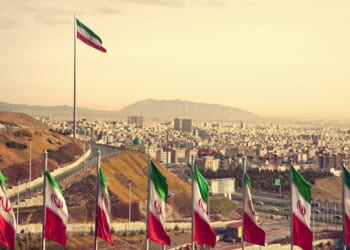
“Religious liberty might be supposed to mean that everybody is free to discuss religion,” observed G.K. Chesterton in 1935. “In practice it means that hardly anybody is allowed to mention it.”
This could come to mind hearing about yet another “separation of church and state” lawsuit. This time the issue involves Catholic statues being erected in Quincy, a Massachusetts city. Far from the Bay State’s Puritan roots, too, the plaintiffs aren’t Calvinist Protestants objecting to Catholic imagery in particular. Rather, involved are the usual suspects: anti-theists and others who, Chesterton might say, too often believe that hardly anybody is allowed to mention religion at all.
USA Today reports on the story:
Quincy Mayor Thomas Koch commissioned statues of St. Michael and St. Florian, the patron saints of police and firefighters, to adorn its new police headquarters. But more than a dozen residents are suing Koch, alleging that the city is violating religious neutrality as outlined in the state constitution.
A judge granted a preliminary injunction in mid-October, barring the statues from being installed as litigation continues.
Koch told The Patriot Ledger, part of the USA TODAY Network, that the city would be appealing the ruling.
“We chose the statues of Michael and Florian to honor Quincy’s first responders, not to promote any religion,” Koch said. “These figures are recognized symbols of courage and sacrifice in police and fire communities across the world.”
The case, Fitzmaurice et al. v. City of Quincy, was filed in May in Norfolk Superior Court. The plaintiffs claim to represent groups such as atheists, humanists, Catholics, Unitarians, Jews, and the “spiritual” or non-affiliated. Organizations representing them include the ACLU, Americans United for Separation of Church and State, and the Freedom From Religion Foundation.
“Religious” Heroes Need Not Apply?
Now, it’s tragic that, even after a multitude of such cases, judges aren’t dismissing these anti-First Amendment lawsuits with prejudice. One could wonder, too: Would the plaintiffs feel better if St. Florian were referenced by his Roman name, Florianus?
Whatever we call him, Florian was a high-ranking Roman army officer who organized and led fire brigades. In fact, he trained elite soldiers whose sole duty was firefighting. A Christian martyr, he was also sentenced to die by fire, for bravely refusing to sacrifice to the Roman gods. (He ultimately was drowned with a millstone tied around his neck in 304 A.D.) So it’s understandable that this über-principled man is associated with firefighting today.
As for St. Michael, he’s an archangel and thus would be the embodiment(?!) of what we call “religious.” He’s the police’s patron saint, however, because he’s the warrior angel in Scripture, battling the Devil. And now he has to do battle with 21st-century militant secularists. Well, at least we know who’s on what side.
But all this raises questions. If Florianus had never become Christian, no one would take issue with government-employed firefighters officially heroizing him. But why should this matter? Why is this anti-theist prejudice and discrimination baked into the system — or thought to be?
Whose Ideas?
This prejudice’s irrationality is put into focus by an argument I’ve often put forth. Consider:
Imagine that the religious ideas in question really have been handed down by God, Creator of the Universe and Inerrant Author of All. Don’t we then have a duty to infuse our public sphere with them? Is it not then an imperative that we immerse schoolchildren in this divine light? Of course, naysayers may now respond, “Not everyone worships sky fairies! These are just man-made beliefs.”
All right, but if so, why say that the man-made beliefs we happen to call “secular” may be in the public square, but the man-made beliefs we happen to call “religious” may not be? If they’re all man-made, wherein lies the difference?
Conclusion: Either these beliefs are man-made, in which case they can share the table with other man-made ideas. They then may be in the public square.
Or they’re from God and must be there. Take your pick.
What of the Law?
Critics may now say, however, that philosophical arguments don’t change the law. No, they don’t — but neither do misconceptions and wishful thinking. So let’s examine the law.
Interestingly, the Fitzmaurice plaintiffs are suing under the Massachusetts Constitution (its Article 3), not our federal one. They claim the statues’ emplacement violates mandated religious “neutrality” and the “separation of church and state.” Yet also interesting is that, as with our national constitution, neither quoted term/phrase is present in the document. (Its Article 3, amended as Article XI in 1833, can be read here.)
Rather, it’s a fiction invented in certain judges’ imaginations — aka “case law,” which isn’t “law” at all but judicial opinion. Law is made by legislatures, not judiciaries.
Speaking of lawmakers, the “separation” side should ponder something about Article 3’s framers.
They allowed, were party to, and took no issue with their Legislature being opened with exclusively Christian prayers — every session. These prayers were unabashed, too, invoking Jesus Christ, the Trinity, and biblical themes (e.g., “through Jesus Christ our Lord”). In fact, the Massachusetts House and Senate each had elected paid chaplains (almost always Protestant ministers). Moreover, this is still the practice, with the House and Senate chaplains today being, respectively, a Catholic priest and a Baptist minister.
In other words, do you you suppose those 19th-century framers were on hallucinogenic mushrooms when formulating their Article 3? If not, it’s logical assuming they knew what their provision meant when they wrote it. And they clearly weren’t mandating any militant-secularist conception of “neutrality” and “separation.”
None of this is to say the “separation of church and state” isn’t a constitutional principle. It is.
It’s found in the 1936 Soviet constitution — aka the “Stalin Constitution.”
True Meaning
It’s no mystery why those 19th-century Massachusetts legislators indulged overt Christian worship. As their Article 3 states, the
public worship of God and instructions in piety, religion and morality, promote the happiness and prosperity of a people and the security of a republican government….
Neutrality? Separation?
Such worship was status quo, too. This is why our Congress did and does open with prayer, and why all 50 state legislatures once did. (Forty-eight still do).
So “separation” was never a (American) constitutional principle. It was mentioned by Thomas Jefferson in an 1802 letter to the Danbury Baptist Association of Connecticut. But even his separation was merely a one-way filtration system. It kept government out of religion — not religion out of government.
The whole idea was to prevent oppression such as what befell poor St. Florian. As for the Fitzmaurice crowd, they need prayer. Because when you’re for “separation” and against St. Michael, aligning with Stalin and Satan, well, you perhaps should wonder: Am I on the right side?




![Hegseth Demands Fitness Requirements, Says 'Fat Troops' 'Not Who We Are' [WATCH]](https://teamredvictory.com/wp-content/uploads/2025/09/Hegseth-Demands-Fitness-Requirements-Says-Fat-Troops-Not-Who-We-350x250.jpg)






